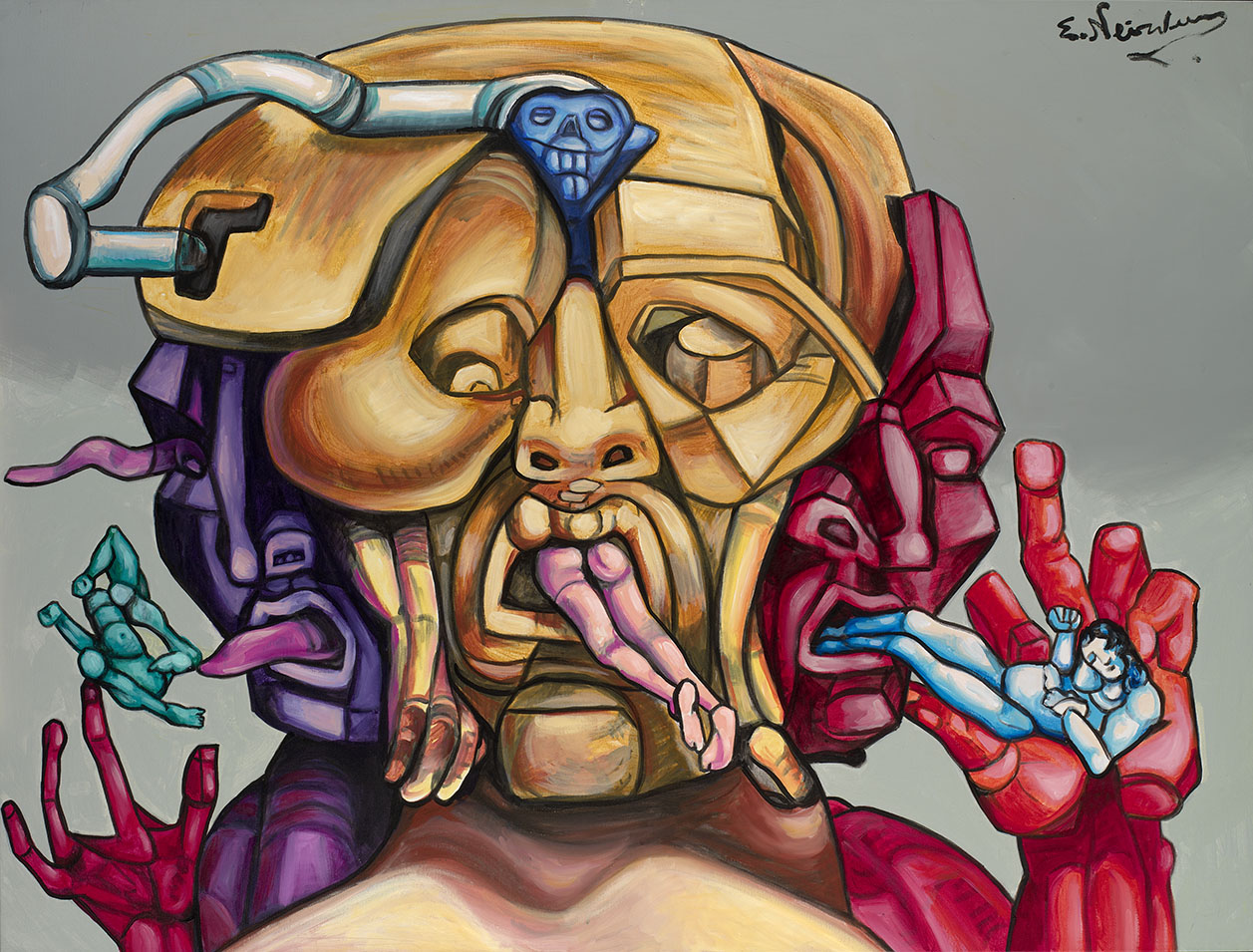MacDougall Auctions 12-18 June 2008
12 June 2008

* 385. NEIZVESTNY, ERNST B. 1926
Untitled signed.
Acrylic on canvas, 121 by 160 cm.
20,000-40,000
Provenance: Purchased directly from the artist.
Private collection, Canada.
The majority of Neizvestny’s works from the 1950s onwards form
three cycles, which have provided a common theme for many of
the artist’s works over the years: Gigantomachy (from 1958), Images of
Dostoevsky (from 1963) and Images of Dante (from 1966).
The series of five important works by the artist, here offered for
sale, relate to the Images of Dante series. Their main subject, whether
depicting Tityus chained to a cliff and torn to pieces by an eagle,
Paolo and Francesca swept along by an icy wind or even three-headed
Lucifer devouring sinners, is the human body which, in Neizvestny’s
view, evolves with time, unlike artificial constructions. Bodies being
formed or conversely being expressively deformed do not merely
illustrate episodes drawn from the descent into Hell from the Divine
Comedy, but express the intrinsically complex, metaphorical language,
steeped in symbolism, that was characteristic of Neizvestny for
whom pondering on the structure, space and visualisation of Dante’s
Inferno is perhaps the most important theme in his work.
In a book of his lectures on art, literature and philosophy, Neizvestny
wrote: “The space of Dante’s Inferno is not Euclidian, as his time
is not real… The horizontal spirals, the structures of Hell on a
vertical axis are punctured with giant bodies. Their legs, torsos
and arms are parts of horizontal cross-sections of the circles of
Hell. Souls in torment, centaurs, snakes, furies and demons recede
into the background …before a sea of flesh…
In Dante, the body is in a dialogue between body and soul, the
earthly and the divine. Dante’s Inferno consists of talking bodies,
dismembered and deformed bodies. Each body part contains its
antithesis. Dante’s body is both the perfect form of Apollonic man,
and Dionysian movement destroying man. The body, like all the
circles of Hell, is permeated with a spheral energy.
Some bodies thrust out of others. Tree branches are interwoven
with anatomy. People grow like stones or dismembered and newly
reassembled animals, one fusing with another.
Dante is a great anatomist. His sculptural bodies, writhing, groaning,
crying out, distorted, are dissected by a strong and practised
hand. His bodies are anatomical. His anatomy is symbolic and at
the same time cosmological. The intertwining of bodies, the tension
of distorted space, the multi-voiced and motley chorus create
a powerful polyphony of order and chaos, uncontrolled temperament
and cold mathematics”.
Notes on symbols:
* Indicates 5% Import Duty Charge applies.
Ω Indicates 20% Import Duty Charge applies.
§ Indicates Artist's Resale Right applies.
† Indicates Standard VAT scheme applies, and the rate of 20% VAT will be charged on both hammer price and premium.